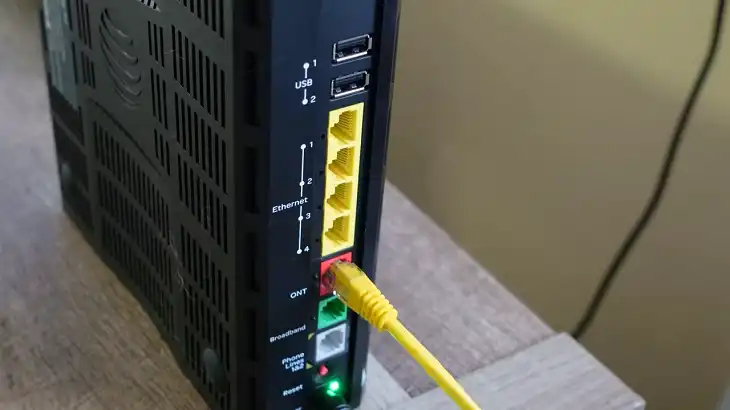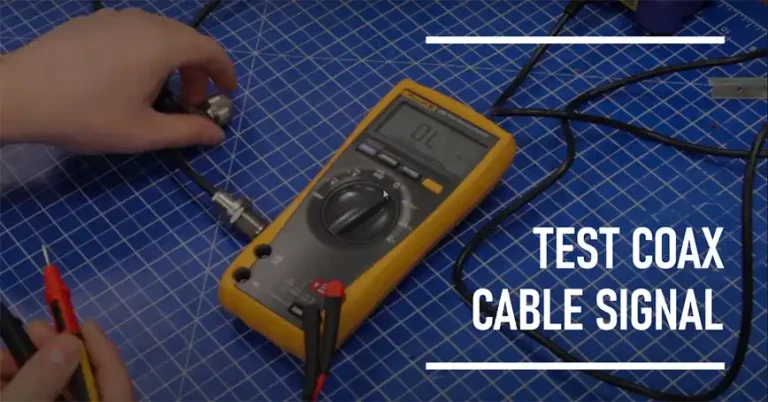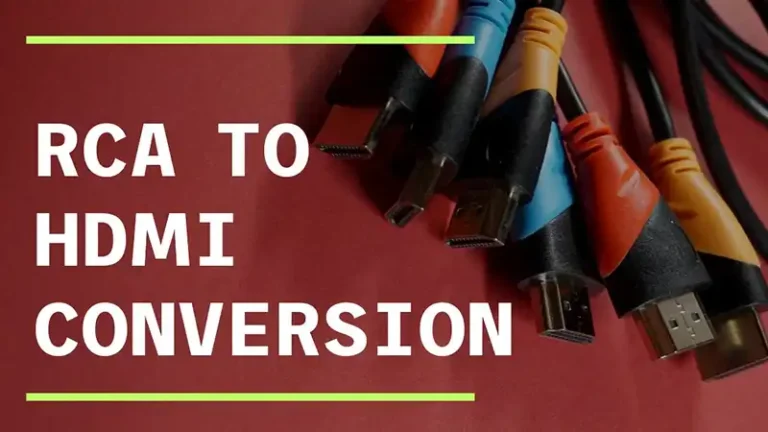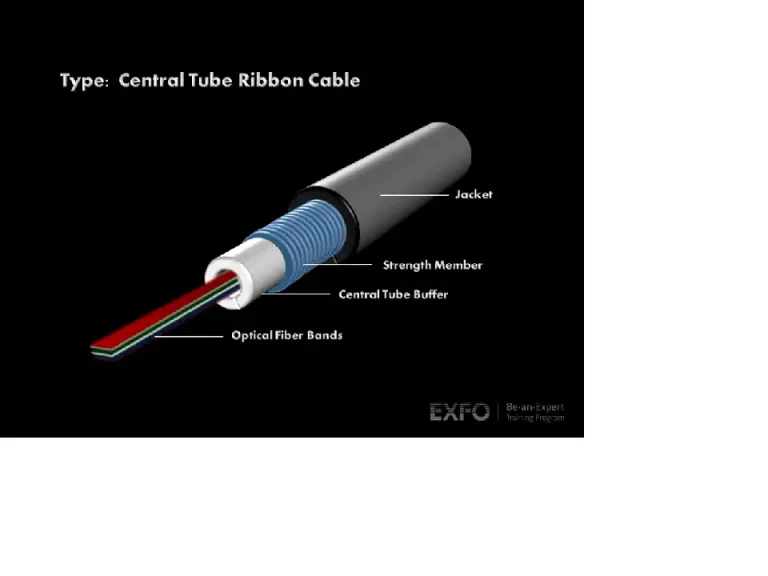How Many Wire Pairs Are In A Cat5 Cable | A Step-by-Step Guide
Cat5 cable is one kind of twisted pair cable that is used for computer networking, home networking, and telephone wiring. As you can’t see the wires inside, you may have some confusion identifying this cable among others. For this, you may wonder how many wire pairs are in a CAT5 cable.
A Cat5 cable has four twisted pairs of copper wires, totaling eight wires. These pairs play a crucial part in transmitting data reliably.
In this guide, I’ll provide you with a detailed understanding of the number of wire pairs in a Cat5 cable, their functions, and the correct order for optimal performance. So, let’s read on to learn the mysteries of this essential networking component.
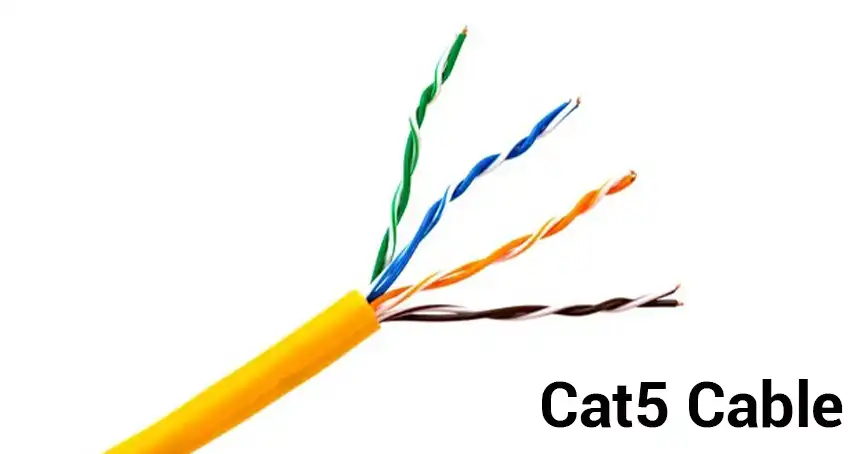
Total Number of Wire Pairs in a Cat5 Cable
A standard Cat5 cable contains four twisted pairs of copper wires, resulting in a total of eight individual wires. Each twisted pair consists of two insulated copper wires twisted together in a helical pattern. This twisting helps to minimize crosstalk between the pairs, ensuring reliable data transmission.
| CAT-5 Wire Pairs | ||
| Pair # | Wire Color | Abbr. |
| 1 | White/Blue | W/B |
| Blue | B | |
| 2 | White/Orange | W/O |
| Orange | O | |
| 3 | White/Green | W/G |
| Green | G | |
| 4 | White/Brown | W/Br |
| Brown | Br | |
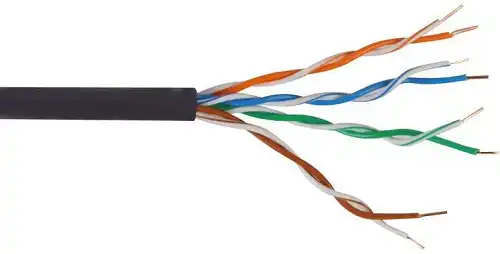
It’s important to note that while Cat5 cables have four wire pairs, not all pairs are necessarily used for data transmission. In some cases, only two pairs may be used, while the remaining pairs serve as spares or are utilized for other purposes, such as Power over Ethernet (PoE) or voice communications.
Role of Each Wire Pair in a Cat5 Cable
In a typical Ethernet network, the four wire pairs in a Cat5 cable serve the following purposes:
- Pair 1 and Pair 2: These two pairs are primarily used for transmitting and receiving data signals, respectively. They carry the actual data being transmitted across the network.
- Pair 3 and Pair 4: These pairs are often used as spares or for additional functionality, such as PoE (Power over Ethernet) or voice communications (VoIP). PoE allows devices to receive both data and power through the same Ethernet cable, eliminating the need for separate power sources.
It’s worth noting that while the roles of the wire pairs are generally consistent, they can be configured differently depending on the specific network requirements or the type of Ethernet standard being used (e.g., 10BASE-T, 100BASE-TX, or 1000BASE-T).
Correct Order of the Wire Pairs in a Cat5 Cable
The correct order of the wire pairs in a Cat5 cable is essential for ensuring proper data transmission and compatibility with network devices. As we already have learned a Cat5 cable has eight wires, and the connector also has 8 pins, you have to put each wire into the correct pin of the connector.
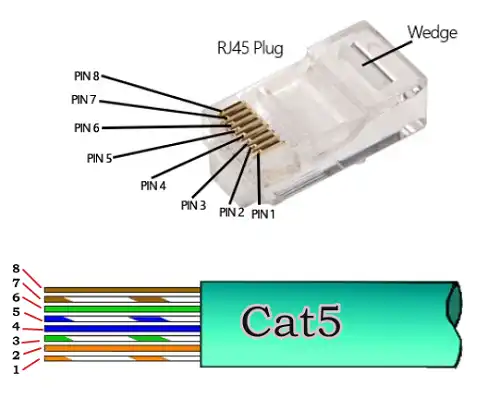
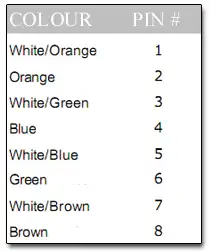
There are two types of wiring orders for a Cat5 cable – “568-A wiring” and “568-B wiring”. The standard wiring order for Cat5 cables is known as the “568B” color code, which is widely accepted and used in Ethernet networks. Both orders are given in the picture below:

It’s crucial to follow this order when terminating (crimping) the cable ends to ensure proper connectivity and avoid potential issues such as crosstalk or signal degradation.
The Basics of Cat5 and Twisted Pair Cables
Cat5 cables, also known as Category 5 cables, are a type of twisted pair cable commonly used in Ethernet networks for transmitting data. These cables are designed to support data transfer rates of up to 1000 Mbps (1 Gigabit per second) over short to moderate distances, making them suitable for various networking applications, including home and office environments.
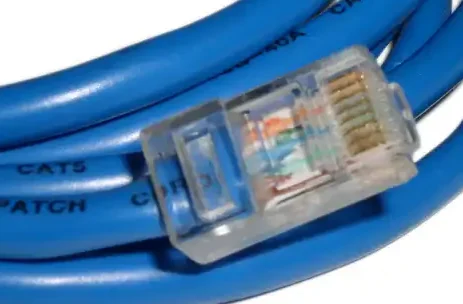
Cat5 cables belong to the category of twisted-pair cables, which are widely used in various networking applications. Twisted-pair cables consist of two insulated copper wires twisted together, forming a pair. This twisting pattern helps cancel out electromagnetic interference (EMI) and crosstalk, ensuring reliable data transmission over longer distances.
In addition to Cat5 cables, other twisted-pair cable types include:
- Cat3 (Category 3): Older cable type suitable for voice communication and basic data transfer up to 10 Mbps.
- Cat5e (Category 5 Enhanced): An improved version of Cat5, capable of supporting Gigabit Ethernet speeds up to 1000 Mbps.
- Cat6 (Category 6): A higher-performance cable designed for faster data transfer rates, supporting 10 Gigabit Ethernet networks up to 10 Gbps.
- Cat6a (Category 6 Augmented): An enhanced version of Cat6, offering even higher performance and supporting data rates up to 10 Gbps over longer distances.
While Cat5 cables are still widely used, newer cable types like Cat5e, Cat6, and Cat6a offer improved performance and higher data transfer rates, making them more suitable for modern networking demands.
Applications of Cat5 Cables
Although Cat5 cables have been surpassed by newer cable types in terms of performance, they still find various applications in computer networking and telecommunications. Here are some common uses of Cat5 cables:
- Ethernet Networks: Cat5 cables are primarily used in Ethernet-based local area networks (LANs), enabling connectivity between computers, servers, routers, and other network devices. They support data transfer rates up to 100 Mbps, making them suitable for basic networking needs.
- Internet Connectivity: In the early days of high-speed internet, Cat5 cables were commonly used to connect modems and routers to the internet service provider’s (ISP) network, facilitating internet access for homes and businesses.
- Legacy Systems: Many older systems and equipment may still rely on Cat5 cables for connectivity, as they were designed before the advent of newer cable types. Upgrading these legacy systems can be costly, so Cat5 cables continue to be used until complete system replacements are feasible.
- Telephone Systems: In some cases, Cat5 cables may be used in traditional telephone systems, such as in the wiring of homes and offices for landline telephone connections.
- Video Surveillance: Certain older or entry-level video surveillance systems may utilize Cat5 cables for transmitting video signals over short distances, although newer systems often employ more advanced cabling solutions.
While Cat5 cables have their limitations in terms of data transfer speeds and distance, they remain a reliable and cost-effective option for basic networking needs and legacy systems. However, for more demanding applications or future-proofing, it is recommended to consider upgrading to newer cable types like Cat5e, Cat6, or even Cat6a, which offer higher performance and support for emerging technologies.
How to Identify a Cat5 Cable
Identifying a Cat5 cable is relatively straightforward, as it typically has specific markings and physical characteristics that distinguish it from other cable types. Here are a few ways to identify a Cat5 cable:
- Cable Printing: Most Cat5 cables have the text “Cat5” or “Category 5” printed directly on the cable jacket. This printing is a clear indication that the cable is designed for Ethernet networking and meets the Category 5 specifications.
- Cable Thickness: Cat5 cables tend to be slightly thicker than other network cable types, such as Cat3 or Cat6 cables. The increased thickness is due to the presence of four twisted pairs of wires within the cable jacket.
- Conductor Gauge: Cat5 cables typically use 24 AWG (American Wire Gauge) copper conductors, which are slightly thicker than the conductors used in lower-category cables like Cat3.
- Cable Stiffness: Due to the twisted pair construction and the presence of four pairs, Cat5 cables are generally stiffer and less flexible than other cable types, making them easier to identify by touch.
- RJ-45 Connector: Most Cat5 cables terminate with an RJ-45 connector, which is the standard connector used for Ethernet networks. However, it’s important to note that other cable types, such as Cat6, may also use RJ-45 connectors.
While these characteristics can help identify a Cat5 cable, it’s always recommended to refer to the cable markings or manufacturer specifications for absolute certainty.
The Differences Between Cat5 and Cat6 Cable
While Cat5 cables are widely used in computer networking, there is a newer and more advanced cable type called Cat6 (Category 6). Here are the main differences between Cat5 and Cat6 cables:
| Feature | Cat5 Cable | Cat6 Cable |
| Data Transfer Speed | Up to 1 Gbps | Up to 10 Gbps |
| Bandwidth | Lower bandwidth capacity | Higher bandwidth capacity |
| Crosstalk Reduction | Basic crosstalk reduction | Improved crosstalk reduction with better shielding |
| Cable Thickness | Thinner and more flexible | Thicker and less flexible |
| Maximum Cable Length | 100 meters (328 feet) | 100 meters (328 feet) |
| Performance over Distance | Lower data rates over longer distances | Higher data rates over longer distances |
| Cost | Less expensive | More expensive |
It’s important to note that while Cat6 cables offer improved performance and higher data transfer rates, they are also more expensive than Cat5 cables. The choice between Cat5 and Cat6 cables often depends on the specific networking requirements, such as the desired data transfer speeds, distance, and potential future upgrades.
Conclusion
Having knowledge about the number of wire pairs and their order of a Cat5 cable is crucial for anyone involved in computer networking. Without knowing this, you can’t ensure reliable and efficient data transmission within your network infrastructure. If you have any further questions or need clarification on any aspect of Cat5 cables, feel free to leave a comment below. I’ll be more than happy to address your queries and provide additional guidance. Thank you for taking the time to read this guide, and we wish you all the best in your networking endeavors!
You May Also Ask
Can a Cat5 Cable Be Used for PoE (Power over Ethernet)?
Yes, a Cat5 cable can be used for PoE (Power over Ethernet) applications, which allow devices to receive both data and power through the same Ethernet cable.
Is It Possible to Mix Cat5 and Cat6 Cables in the Same Network?
While it is possible to mix Cat5 and Cat6 cables in the same network, it is generally not recommended as it can limit the performance of the entire network to the capabilities of the slower Cat5 cables.
What Is the Difference Between Solid and Stranded Cat5 Cables?
Solid Cat5 cables have solid copper conductors, making them more rigid and suitable for permanent installations. Stranded Cat5 cables have flexible stranded conductors, making them more suitable for applications where flexibility is required.

